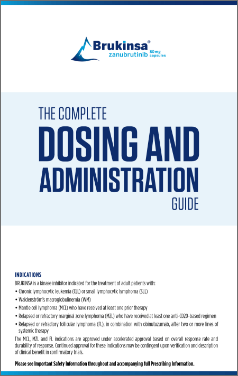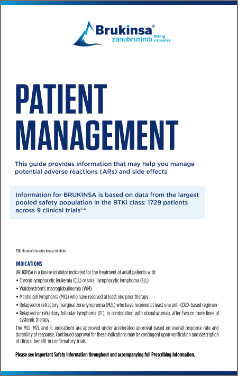BRUKINSA patients can call the myBeOne Support™ program to talk to a dedicated nurse: 1-833-234-4363
TOOLS AND RESOURCES FOR HEALTHCARE PROVIDERS
Materials to help healthcare providers learn about coverage, understand treatment, and educate patients
Patient materials are available in English, Spanish, and Chinese
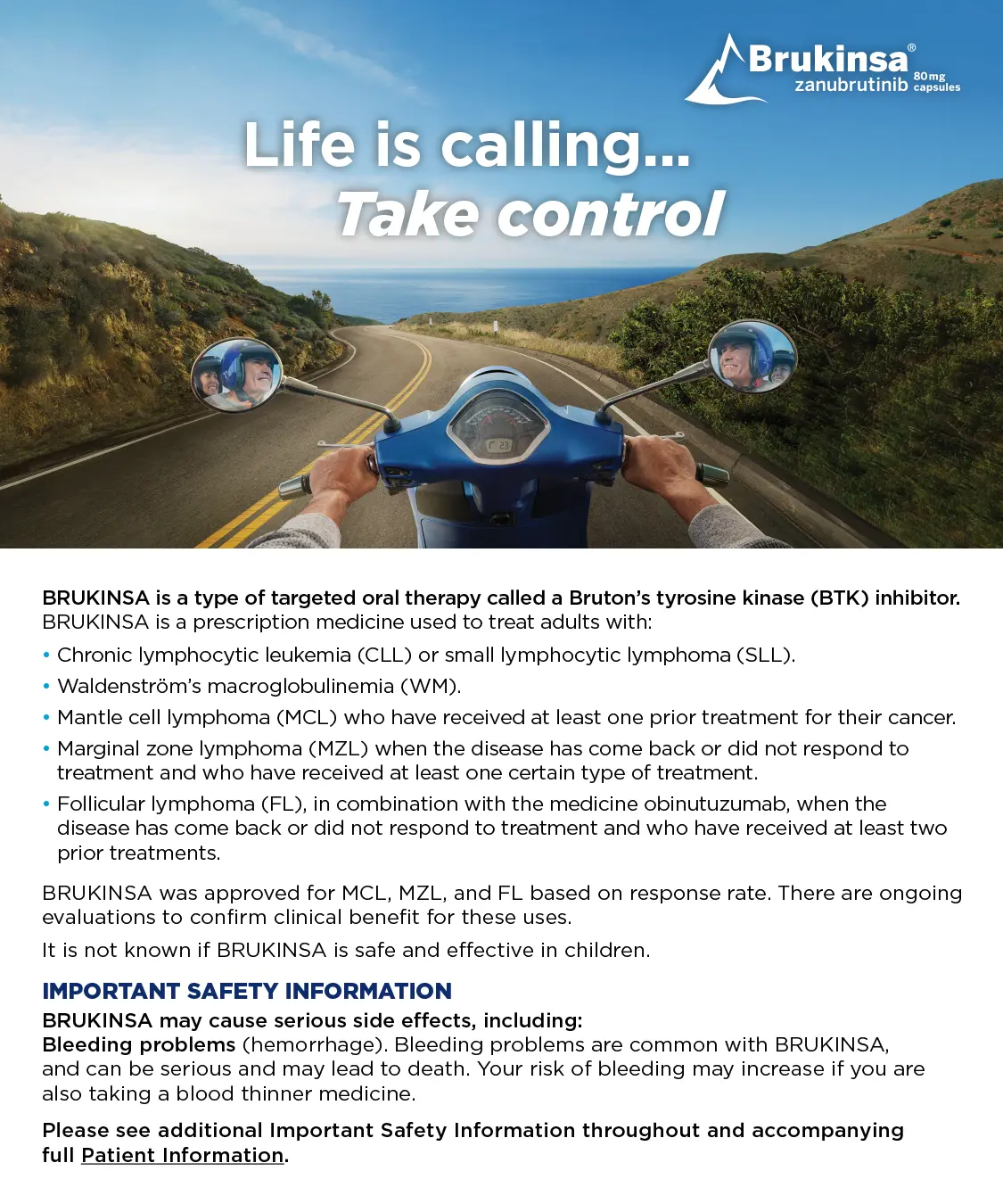
BRUKINSA Patient Brochure
Help your patients gain answers to their questions about treatment with BRUKINSA

myBeOne Support Patient Brochure
An overview of the services available through the patient support program
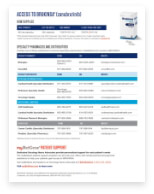
Specialty Pharmacies and Distributors
Learn more about authorized specialty pharmacies and distributors of BRUKINSA
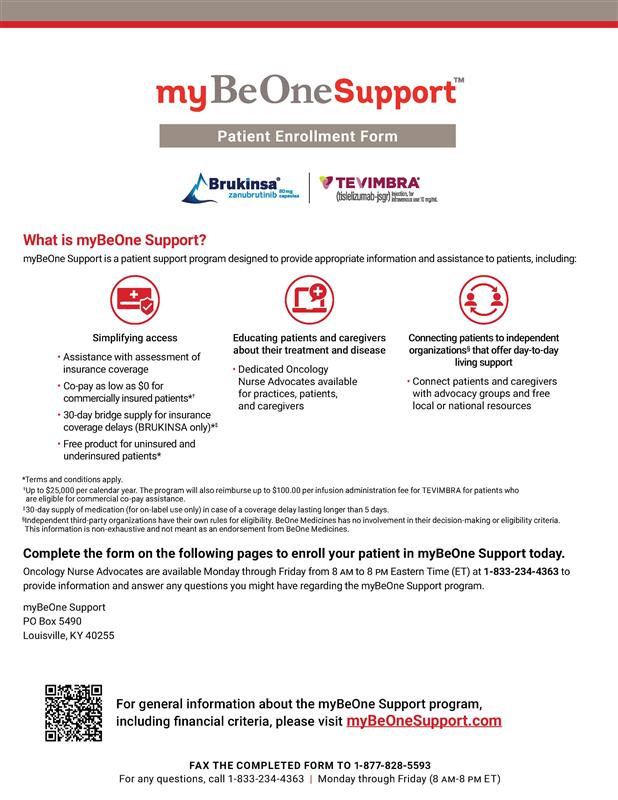
myBeOne Support Enrollment Form
Download and fax this form to enroll in the myBeOne Support program
myBeOneSupport™ is not insurance and does not guarantee product coverage or reimbursement

Dr Nguyen discusses how BRUKINSA has benefited his patients

Dr Nguyen discusses efficacy data across mutations and risk status in CLL

Dr Nguyen discusses the safety profile of BRUKINSA vs ibrutinib in CLL
IMPORTANT SAFETY INFORMATION
WARNINGS AND PRECAUTIONS
Hemorrhage
Fatal and serious hemorrhage has occurred in patients with hematological malignancies treated with BRUKINSA. Grade 3 or higher hemorrhage including intracranial and gastrointestinal hemorrhage, hematuria, and hemothorax was reported in 3.8% of patients treated with BRUKINSA in clinical trials, with fatalities occurring in 0.2% of patients. Bleeding of any grade, excluding purpura and petechiae, occurred in 32% of patients.
Bleeding has occurred in patients with and without concomitant antiplatelet or anticoagulation therapy. Coadministration of BRUKINSA with antiplatelet or anticoagulant medications may further increase the risk of hemorrhage.
Monitor for signs and symptoms of bleeding. Discontinue BRUKINSA if intracranial hemorrhage of any grade occurs. Consider the benefit-risk of withholding BRUKINSA for 3-7 days before and after surgery depending upon the type of surgery and the risk of bleeding.
Infections
Fatal and serious infections (including bacterial, viral, or fungal infections) and opportunistic infections have occurred in patients with hematological malignancies treated with BRUKINSA. Grade 3 or higher infections occurred in 26% of patients, most commonly pneumonia (7.9%), with fatal infections occurring in 3.2% of patients. Infections due to hepatitis B virus (HBV) reactivation have occurred.
Consider prophylaxis for herpes simplex virus, pneumocystis jirovecii pneumonia, and other infections according to standard of care in patients who are at increased risk for infections. Monitor and evaluate patients for fever or other signs and symptoms of infection and treat appropriately.
Cytopenias
Grade 3 or 4 cytopenias, including neutropenia (21%), thrombocytopenia (8%) and anemia (8%) based on laboratory measurements, developed in patients treated with BRUKINSA. Grade 4 neutropenia occurred in 10% of patients, and Grade 4 thrombocytopenia occurred in 2.5% of patients.
Monitor complete blood counts regularly during treatment and interrupt treatment, reduce the dose, or discontinue treatment as warranted. Treat using growth factor or transfusions, as needed.
Second Primary Malignancies
Second primary malignancies, including non-skin carcinoma, have occurred in 14% of patients treated with BRUKINSA. The most frequent second primary malignancy was non-melanoma skin cancers (8%), followed by other solid tumors in 7% of the patients (including melanoma in 1% of patients) and hematologic malignancies (0.7%). Advise patients to use sun protection and monitor patients for the development of second primary malignancies.
Cardiac Arrhythmias
Serious cardiac arrhythmias have occurred in patients treated with BRUKINSA. Atrial fibrillation and atrial flutter were reported in 4.4% of patients treated with BRUKINSA, including Grade 3 or higher cases in 1.9% of patients. Patients with cardiac risk factors, hypertension, and acute infections may be at increased risk. Grade 3 or higher ventricular arrhythmias were reported in 0.3% of patients.
Monitor for signs and symptoms of cardiac arrhythmias (e.g., palpitations, dizziness, syncope, dyspnea, chest discomfort), manage appropriately, and consider the risks and benefits of continued BRUKINSA treatment.
Hepatotoxicity, Including Drug-Induced Liver Injury
Hepatotoxicity, including severe, life-threatening, and potentially fatal cases of drug-induced liver injury (DILI), has occurred in patients treated with Bruton tyrosine kinase inhibitors, including BRUKINSA.
Evaluate bilirubin and transaminases at baseline and throughout treatment with BRUKINSA. For patients who develop abnormal liver tests after BRUKINSA, monitor more frequently for liver test abnormalities and clinical signs and symptoms of hepatic toxicity. If DILI is suspected, withhold BRUKINSA. Upon confirmation of DILI, discontinue BRUKINSA.
Embryo-Fetal Toxicity
Based on findings in animals, BRUKINSA can cause fetal harm when administered to a pregnant woman. Administration of zanubrutinib to pregnant rats during the period of organogenesis caused embryo-fetal toxicity, including malformations at exposures that were 5 times higher than those reported in patients at the recommended dose of 160 mg twice daily. Advise women to avoid becoming pregnant while taking BRUKINSA and for 1 week after the last dose. Advise men to avoid fathering a child during treatment and for 1 week after the last dose. If this drug is used during pregnancy, or if the patient becomes pregnant while taking this drug, the patient should be apprised of the potential hazard to a fetus.
ADVERSE REACTIONS
The most common adverse reactions (≥30%), including laboratory abnormalities, in patients who received BRUKINSA (N=1729) are decreased neutrophil count (51%), decreased platelet count (41%), upper respiratory tract infection (38%), hemorrhage (32%), and musculoskeletal pain (31%).
DRUG INTERACTIONS
CYP3A Inhibitors: When BRUKINSA is coadministered with a strong CYP3A inhibitor, reduce BRUKINSA dose to 80 mg once daily. For coadministration with a moderate CYP3A inhibitor, reduce BRUKINSA dose to 80 mg twice daily.
CYP3A Inducers: Avoid coadministration with strong or moderate CYP3A inducers. Dose adjustment may be recommended with moderate CYP3A inducers.
SPECIFIC POPULATIONS
Hepatic Impairment: The recommended dose of BRUKINSA for patients with severe hepatic impairment is 80 mg orally twice daily.
Please see full Prescribing Information.
INDICATIONS
BRUKINSA is a kinase inhibitor indicated for the treatment of adult patients with:
- Chronic lymphocytic leukemia (CLL) or small lymphocytic lymphoma (SLL)
- Waldenström’s macroglobulinemia (WM)
- Mantle cell lymphoma (MCL) who have received at least one prior therapy
- Relapsed or refractory marginal zone lymphoma (MZL) who have received at least one anti-CD20-based regimen
- Relapsed or refractory follicular lymphoma (FL), in combination with obinutuzumab, after two or more lines of systemic therapy
The MCL, MZL and FL indications are approved under accelerated approval based on overall response rate and durability of response. Continued approval for these indications may be contingent upon verification and description of clinical benefit in confirmatory trials.

